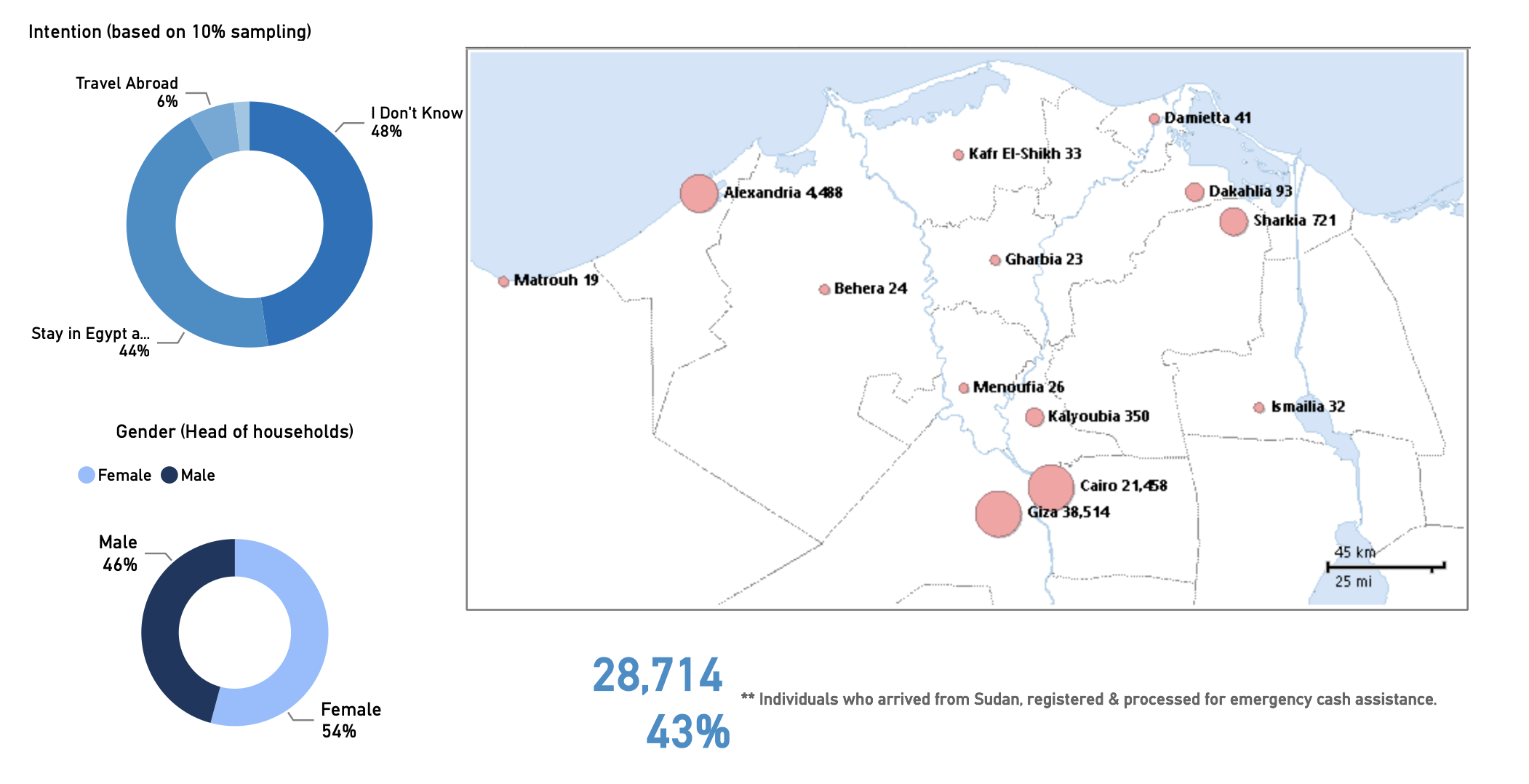The Sudanese Refugee Crisis in Egypt: Struggle and Resilience
The devastating war that began in Sudan on April 15, 2023, has had profound repercussions not only within Sudan itself but also in neighbouring countries. Egypt, as a significant host nation for international migrants, has found itself grappling with the challenges of accommodating the influx of refugees and asylum-seekers, with the Sudanese making up a substantial portion of this population.
In this blog, we will delve into the refugee crisis in Egypt, focusing on the plight of Sudanese refugees and the efforts made by various organizations to assist them.
A Complex Migration Landscape:
According to the International Organization for Migration (IOM) in August 2022, Egypt was home to an estimated 9 million international migrants, comprising a staggering 8.7% of the country's population. These migrants hailed from 133 different countries, with Sudanese, Syrians, Yemenis, and Libyans constituting the largest groups. Notably, in 2022, only 3% of these migrants were classified as refugees or asylum-seekers, meaning the majority either had valid visa status or no legal status.
Vulnerable Migrants:
Of these 9 million international migrants, 15% were classified as "vulnerable migrants," highlighting the precarious situations many individuals faced in Egypt. These vulnerable migrants were at risk of exploitation, discrimination, and social exclusion.
The Sudanese Predicament:
The Sudanese, who formed the largest migrant group with an estimated 4 million individuals in Egypt, were significantly impacted by the war in their home country. According to the UNHCR (UN Refugees Agency in Egypt), significant numbers of Sudanese refugees arrived in Egypt after the conflict began in April 2023. As of October 2023, the overall registered Sudanese refugee population stood at 131,378 individuals.
Challenges in Registration:
The registration process for Sudanese refugees in Egypt has been a complex endeavour. While over 100,000 individuals from Sudan have appointments for registration, only 67% of these have been newly registered.
The number of Sudanese refugees arriving in Egypt far exceeds the capacity to process and register them. This has resulted in a backlog of over 100,000 individuals waiting for registration, a significant challenge for the authorities.
Lack of Official Refugee Status:
In the face of this crisis, it is crucial to note that less than 2% of Sudanese refugees are officially registered as refugees. The intentions of these registered individuals vary, with 44% planning to stay in Egypt, while 6% plan to travel abroad. The reasons for staying in Egypt include work, higher education, applying for refugee status or asylum-seeking, accessing medication, and marriage.
Resilience and Hope:
Despite the challenges and uncertainties, the Sudanese refugees in Egypt have shown remarkable resilience. Many have sought opportunities for education and employment, contributing to the diverse fabric of Egyptian society. NGOs and international organizations are also working tirelessly to provide humanitarian assistance and support.
Conclusion:
The refugee crisis in Egypt, particularly the influx of Sudanese refugees in the wake of the conflict in Sudan, is a complex and evolving situation. With limited official recognition, a backlog of registrations, and the challenges associated with integrating such a significant number of newcomers, both the Egyptian government and the international community must collaborate to provide assistance and support.
The resilience of Sudanese refugees in Egypt is a testament to their determination and hope for a brighter future, even in the face of adversity.






